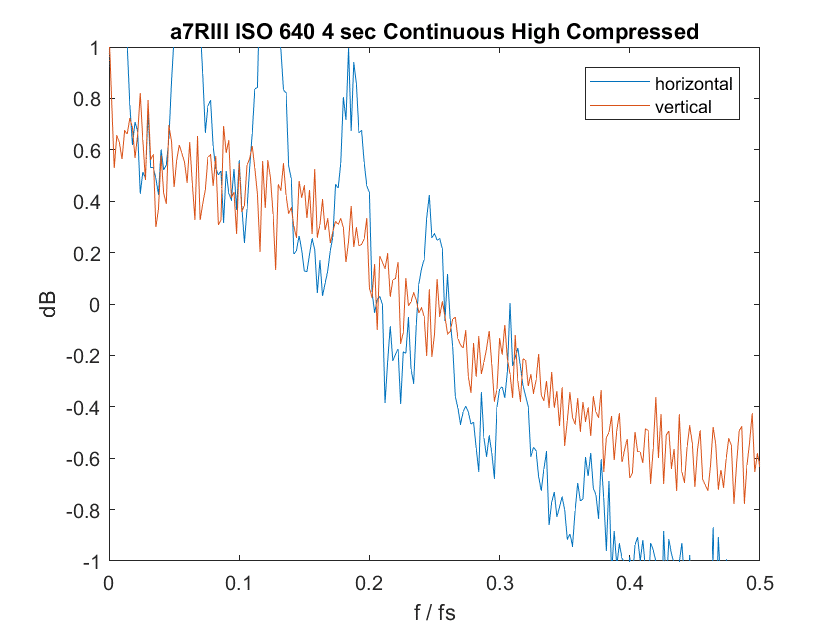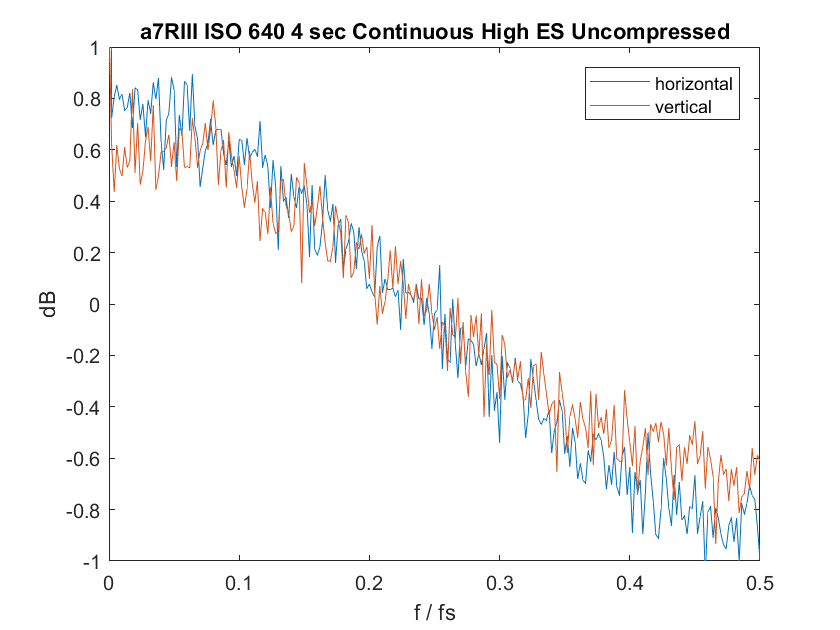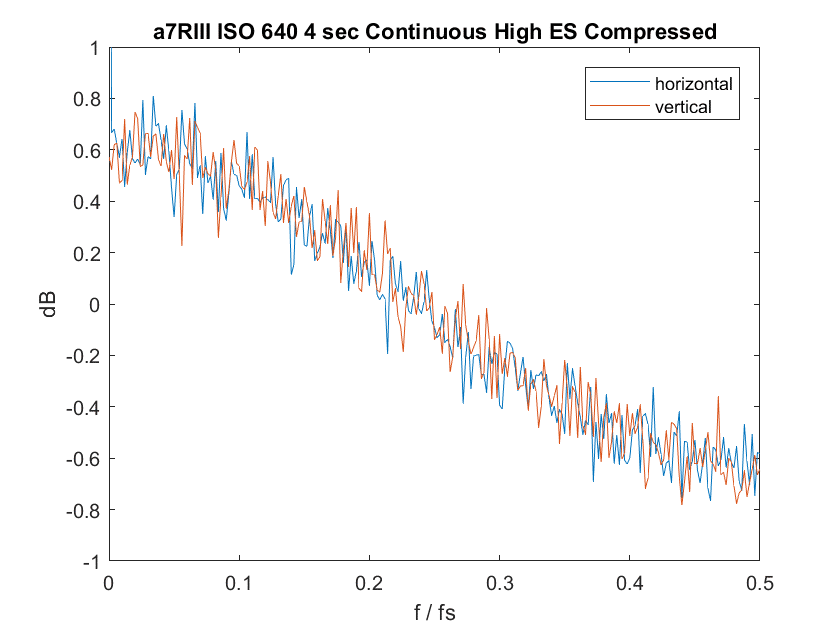This is a continuation of a series of posts on the Sony a7RIII. You should be able to find all the posts about that camera in the Category List on the right sidebar, below the Articles widget. There’s a drop-down menu there that you can use to get to all the posts in this series. You can also click on the “a7RIII” link in the “You are here” line at the top of this page.
I have received some questions that relate to the previous post.
What happens to the a7RIII when you force 12-bit precision by using continuous shutter and compressed raw?
Answer: nothing good from a steller consumption point of view.
Can you get around the star removal by using the electronic shutter in the a7RIII, which, in compressed mode forces 12-bit precision?
Answer: compression makes no difference. Here are the histograms for completeness.
Uncompressed, ES on, continuous high:
Compressed, ES on, continuous high:
Can you get around the pixel eating by using pixel-shift mode?
Answer: no, that makes no difference.







Tu Vuong says
Thanks for the summary Jim.
With the introduction of the improved star-eater algorithm on firmware 4.0 on the A7RII and the A7RIII. I’m wondering how bad the spatial filtering will get in Bulb mode now?.
When I was still using the A7II, I had always been avoiding using Bulb mode due to its bad effects on fine details, as analysed in your post here: http://blog.kasson.com/the-last-word/spacial-filtering-of-raw-images-by-sony-a7s-a7ii/ . We don’t really need to take astro photos to see details being munched up.
Would it be possible for you to render the same graph of a picture taken in Bulb mode with the A7RIII (and A7RII from firmware 4.0 onwards)?. It would be nice if Sony has improved Bulb mode to use the same algorithm.
I don’t mind stacking as it gives us lower effective ISO but it does take a bit of time in post-processing, particularly with water where there’s no need for sharpness nor high DR.